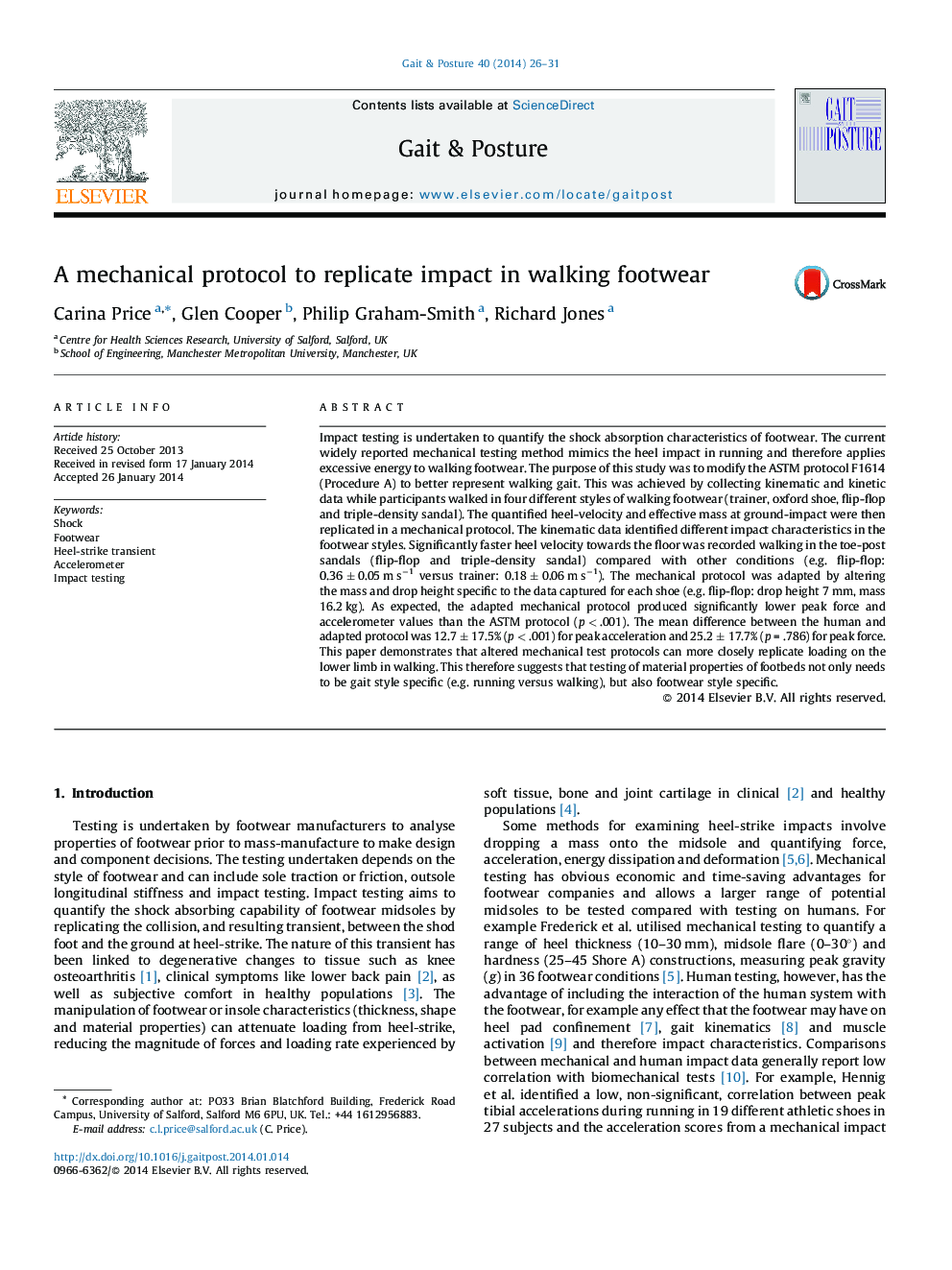| کد مقاله | کد نشریه | سال انتشار | مقاله انگلیسی | نسخه تمام متن |
|---|---|---|---|---|
| 6206434 | 1265647 | 2014 | 6 صفحه PDF | دانلود رایگان |
- Impact characteristics when healthy participants walked in different shoes were quantified.
- A mechanical method was developed which replicated these characteristics.
- The new method more closely resembled the actual human data than the current widely used protocol.
Impact testing is undertaken to quantify the shock absorption characteristics of footwear. The current widely reported mechanical testing method mimics the heel impact in running and therefore applies excessive energy to walking footwear. The purpose of this study was to modify the ASTM protocol F1614 (Procedure A) to better represent walking gait. This was achieved by collecting kinematic and kinetic data while participants walked in four different styles of walking footwear (trainer, oxford shoe, flip-flop and triple-density sandal). The quantified heel-velocity and effective mass at ground-impact were then replicated in a mechanical protocol. The kinematic data identified different impact characteristics in the footwear styles. Significantly faster heel velocity towards the floor was recorded walking in the toe-post sandals (flip-flop and triple-density sandal) compared with other conditions (e.g. flip-flop: 0.36 ± 0.05 m sâ1 versus trainer: 0.18 ± 0.06 m sâ1). The mechanical protocol was adapted by altering the mass and drop height specific to the data captured for each shoe (e.g. flip-flop: drop height 7 mm, mass 16.2 kg). As expected, the adapted mechanical protocol produced significantly lower peak force and accelerometer values than the ASTM protocol (p < .001). The mean difference between the human and adapted protocol was 12.7 ± 17.5% (p < .001) for peak acceleration and 25.2 ± 17.7% (p = .786) for peak force. This paper demonstrates that altered mechanical test protocols can more closely replicate loading on the lower limb in walking. This therefore suggests that testing of material properties of footbeds not only needs to be gait style specific (e.g. running versus walking), but also footwear style specific.
Journal: Gait & Posture - Volume 40, Issue 1, May 2014, Pages 26-31
